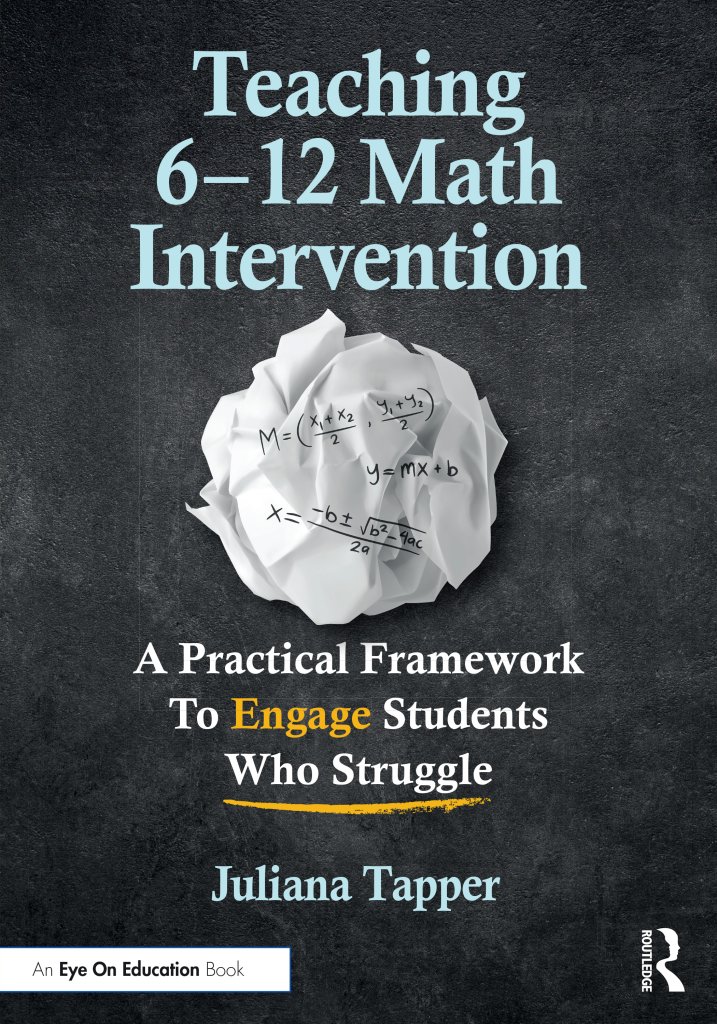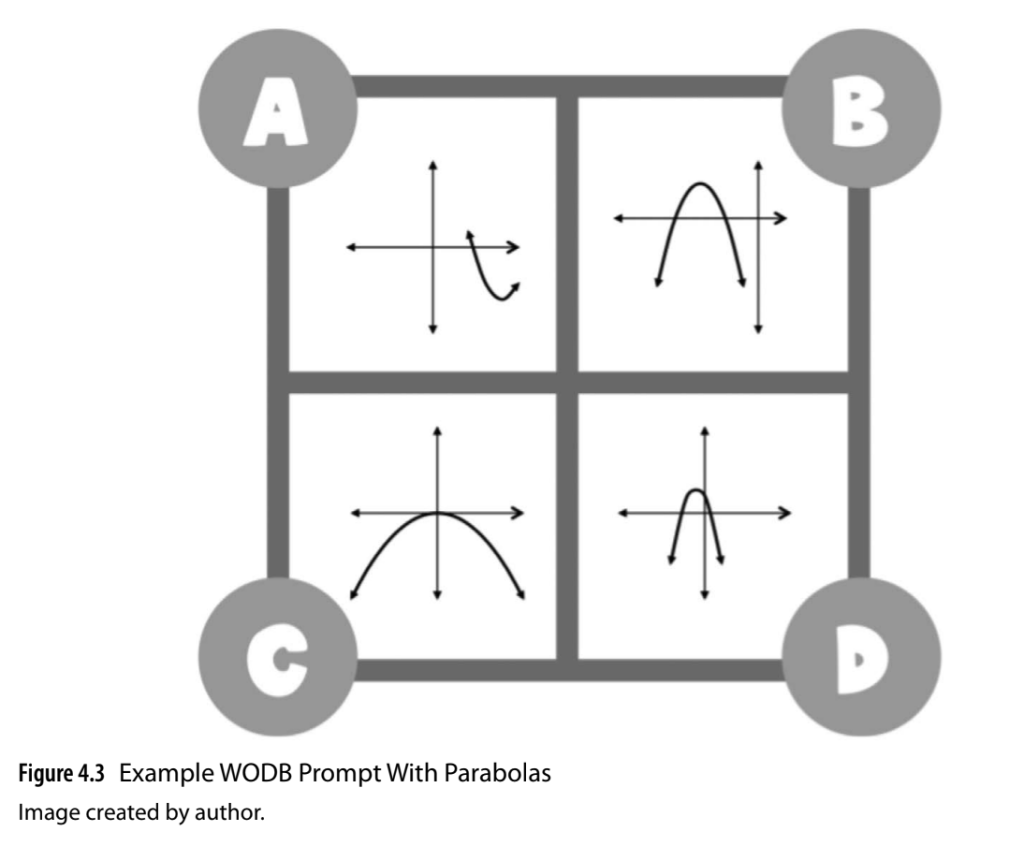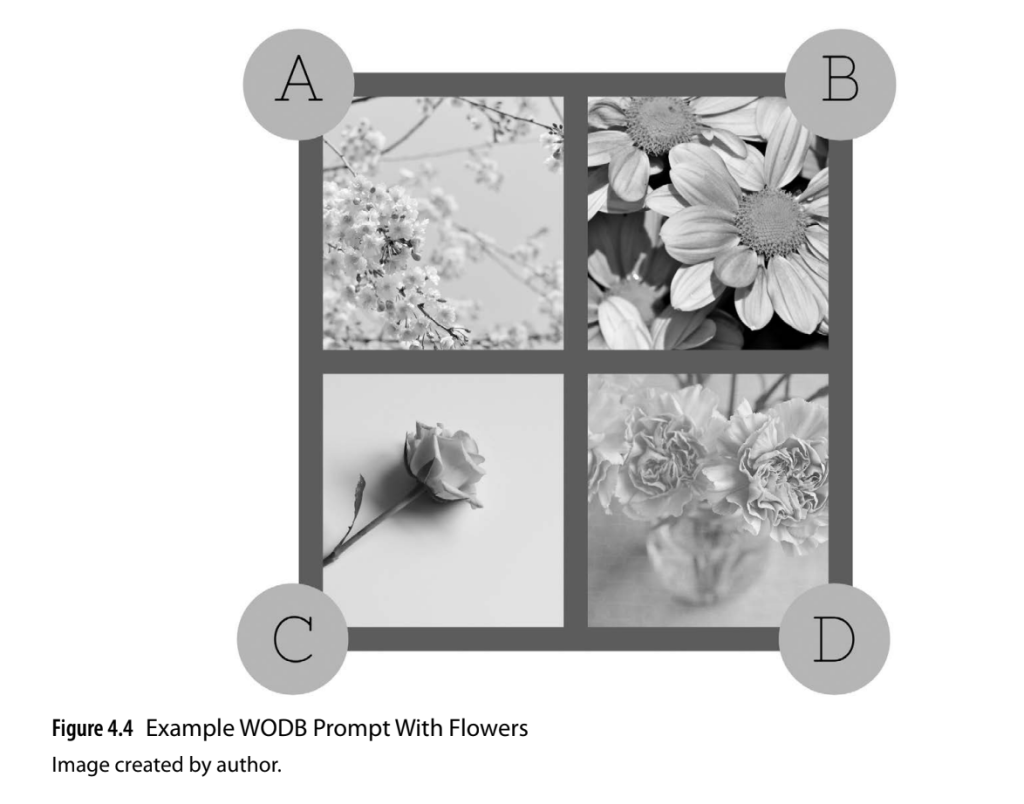Which One Doesn’t Belong?
This simple activity engages students in math talk and reasoning—and shows them there’s not always a right answer.
Your content has been saved!
Go to My Saved Content.How do you start your math period? I used to start my class the way I had experienced math class, with homework review. I struggled with engagement and behavior issues from the very moment the bell rang because, if I’m being honest, very few of my students actually did their homework. So while my intention with starting my class with homework review was to give students a time to ask questions and correct errors to help deepen their understanding, it was just additional time for the majority of my class to goof off and disengage.
When I look back at it now, it makes a lot of sense. If you didn’t do the homework, why would you care about reviewing the homework? In fact, you might feel excluded, shamed, or embarrassed for not doing the homework. While I certainly didn’t mean to create any of those feelings for my students, I now know that’s exactly what I did when I spent the first minutes of class excluding the vast majority of my kids with homework review. It got me thinking, how should I start the class period if I want to make sure all students feel included in our community, get in the math mindset, and have a way to actively participate and build confidence?

I was shy and no one was sitting near me so I just sat there thinking to myself that this was such a basic activity. In my mind there was one glaringly correct answer to this question. The presenter quieted the group and began facilitating the structure. I sat there amazed by what other people were saying. Everyone had so many cool reasons for which one didn’t belong in their mind, things I would have never noticed on my own. It seemed no one had the same answer as me and for some reason that gave me the courage to raise my hand and contribute my reasoning. I was sold on this structure for getting all students, even the quiet shy ones, even the typically disengaged ones, to participate. When I returned to teaching my own math intervention class a few years later I excitedly tried it out with my own high school math intervention students as a warm up each week.
The first time I saw the “Which One Doesn’t Belong?” structure was at an NCTM conference in San Francisco many years ago when I was a district Math TOSA (Teacher On Special Assignment). I walked into the large stadium-style session room and took a seat in the middle. The presenter showed us an image set, gave us the prompt “which one doesn’t belong,” and asked us to turn and talk with a partner.
It was a total transformation of the start of class. Instead of coming in and sitting through fifteen minutes of homework review, students came in, saw the “Which One Doesn’t Belong?” prompt on the board, and were immediately excited to be in math class.
Instead of walking in with an immediate invitation to disengage (what else is a kid to do that didn’t do the homework?) or worse, an overwhelming amount of problems on a warm up that kick math anxiety into high gear, students walk in and immediately have something to engage with, something to think deeply about, something they feel is an invitation to actively participate no matter how many days of school they had missed, how many grade levels below they were, or whether or not they had done the homework. It changed the entire feel of class not just for the first five to ten minutes, but for the entire period.
Which One Doesn’t Belong (WODB)
Imagine my delight when, in the midst of coloring yet another princess book with my three-year-old daughter at our kitchen table littered with Crayola markers, she looked up and asked, “Mommy, what does this say?” To my surprise it was a Princess version of Which One Doesn’t Belong! I explained the activity to her and we jumped into a fun discussion—because three-year-olds really do say the darndest things—about which image didn’t belong in the set. First she told me one reason then I asked her for another and another and another. She loved that every reason was correct, it motivated her to keep going, to keep thinking.
My math teacher brain was thrilled! Not only is this structure apparently great for Princess coloring books for preschool-ers, it’s a fantastic way to get middle and high school students talking about math. Many curricula are beginning to build the Which One Doesn’t Belong (WODB) structure into their warm ups and I am here for it! If you’re familiar with the structure I’m going to be sharing helpful tips for making the most of WODB for your students who struggle, so don’t skip this section. If you’re brand new to WODB, prepare to have your mind blown.
Example WODB Prompt: Using the image below, which one doesn’t belong? Justify your reasoning.

- Display the image set to students with the prompt, "Which One Doesn’t Belong?"
- Give five minutes of think/write time
- You can ask students to pick why ONE doesn’t belong, or you could ask them to come up with a reason why EACH one doesn’t belong (that’s my personal favorite so that I have more time to take attendance)
- Provide sentence stems for students, “A doesn’t belong because ...” “ˆ doesn’t belong because...” etc.
- Ask students, “Who wants to tell us why one of these doesn’t belong?”
- Scribe the student reasoning on the board
- KEY FACILITATION POINT: Ask, “does anyone have another rea- son why that same one doesn’t belong?” and scribe any reasoning on the board – Asking this question instead of just moving on to the next image will really help students see that there are many correct answers!
- Be sure to celebrate the reasoning of all students! Especially if you get a student participating who usually doesn’t participate!
- Once you’ve gotten a few responses for that first image, ask students, “Who has another reason why one of the others doesn’t belong?”
- Scribe the student reasoning on the board and repeat the process until you’ve gotten multiple reasons for each image.
The key idea with which one doesn’t belong is that it has an entry point for all students and is an activity with multiple correct answers, making it a very safe activity to participate in. The point of this activity structure is to get students to see that there are multiple correct answers and that their answer is valued. The first time you facilitate WODB with your students it might be a little slow and quiet, like it was for me in that conference session, but they are going to hear what their peers say and they are going to hear you validating every single student and that will help them feel incredibly empowered to participate in your class during this activity and beyond. The following are some tips to help.
Which One Doesn’t Belong tips
Tip #1. Introduce Without Math It is vital that you introduce this structure without math. Choose a set of four images that have nothing to do with math in order to keep math anxiety low and avoid triggering math trauma. Here’s an example:

Tip #2: Add Labels. You’ll notice that I’ve added the labels A, B, C, and D. This helps make the activity more accessible for multilingual learners and I encourage you to label your image sets as well. Instead of having to say, “the upper right doesn’t belong because...” students can just say, “B doesn’t belong because...” and it helps eliminate a barrier to participation.
Tip #3: Change The Prompt. Many teachers do not like the prompt, “which one doesn’t belong?” because belonging is so important to so many students and talking about not belonging can be triggering. Many teachers use the prompt, “which one is different?” and I offer that to you as well. Another wonderful prompt I heard a teacher use is “which two belong together?” This really ups the rigor of the activity and forces students to draw deeper connections with the images and mathematics.
Tip #4: Celebrate And Validate. If we want students who are not used to participating in math class to actively participate in our math class, we must validate and celebrate the reasoning that they share. By scribing everyone’s responses and giving students verbal validation of their reasoning you will be helping students to feel more confident and comfortable sharing their reasoning all period long. It doesn’t matter if the reason is a little superficial or just for laughs, scribe it and validate it.
Tip #5: Add A Word Wall. Using WODB at the beginning of a unit is a wonderful way to assess prior knowledge of a topic in a non-threatening, non-traditional way because it allows students to share their reasoning in a casual way with informal language. You can use WODB at the end of a unit and encourage students to use more academic language in their reasoning to see how far they’ve come. Adding a word wall with the mathematical vocabulary you want them to use is a great accommodation for students with IEPs and a way to support all students’ mathematical language development.
Tip #6: Caution WODB is not a visual multiple choice problem! I’ve seen many teachers use this structure in their classroom, but set it up in a way that has only one correct answer. That is not how to use this structure effectively for students who struggle. In order for this to be an effective structure to boost students' confidence, there must be multiple reasons why each image doesn’t belong in the set and you must be able to validate any answers students give.
From Teaching 6-12 Math Intervention: A Practical Framework to Engage Students Who Struggle by Juliana Tapper. © 2025 Routledge/Taylor & Francis Inc. Reproduced with permission of the publisher. All rights reserved.
